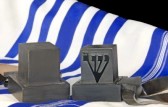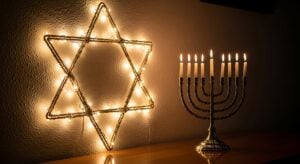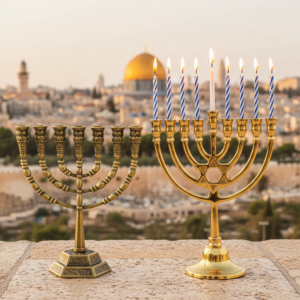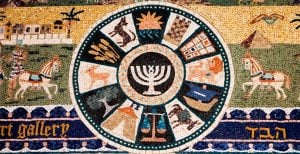 The term “Bar Mitzvah” refers to two things: As soon as a Jewish boy turns 13 years old he automatically becomes a “Bar Mitzvah”, and is recognized by Jewish tradition as having the same moral and ethical responsibilities for his decisions and actions as a full grown man. However, the term “Bar Mitzvah” also refers to the religious ceremony that generally follows soon afterwards.
The term “Bar Mitzvah” refers to two things: As soon as a Jewish boy turns 13 years old he automatically becomes a “Bar Mitzvah”, and is recognized by Jewish tradition as having the same moral and ethical responsibilities for his decisions and actions as a full grown man. However, the term “Bar Mitzvah” also refers to the religious ceremony that generally follows soon afterwards.
Why 13?
Until age 13 for ( 12 for girls), we are mostly preoccupied with the demands and appetites of our physical nature. Around this age in life, another voice begins to be heard – the voice of our soul. We begin to seek meaning, fulfillment, connection, inspiration, the demands and appetites of our spiritual inner self.
Together with an expanded consciousness comes free will, the ability to make real choices. Do we choose to continue live according to the whims of our physical desires, or do we make choices in line with a more enlightened awareness? According to Judaism, the goal is to choose the latter and the mitzvot are the way to do just that.
What Does it it Entail?
While a special religious service or ceremony is not required for a boy to become a Bar Mitzvah, over the centuries more emphasis has been placed on the ceremony as a rite of passage of sorts. While the exact role he plays in the service will vary between the different Jewish movements and synagogues it usually involves some or all of the following elements:
The Aliyah
When the Torah is publicly read in the synagogue, congregants are called up for an “aliyah.” Aliyah means “ascent,” referring both to the physical ascent onto the platform where the Torah is read and to the spiritual elevation experienced at that time. Traditionally, a boy is honored with an aliyah on the first “Torah-reading-day” that follows his thirteenth birthday.
Reading the Torah or Haftarah Portion
In some communities it is customary for the Bar Mitzvah boy to chant the Torah reading, or at least part of it. Others have the custom of honoring the Bar Mitzvah boy with the final aliyah, known as “Maftir,” after which he chants the Haftarah–the reading from the prophets which follows the Shabbat Torah reading.
The Mitzvah of Tefillin
Tefillin are black leather boxes containing parchments inscribed with the Shema and other Biblical passages. The Torah commands adult Jewish men to wear the tefillin on their head and upper arm with leather straps in fulfillment of the verse, “You shall bind them as a sign upon your hand, and they should be for a reminder between your eyes” (Deuteronomy 6:8). A boy does not put on tefillin until he approaches the age of thirteen. For this reason, more than any other practice, tefillin have always served as a symbol of the transition from Jewish childhood to adulthood.
The Party
Today, while many Bar Mitzvah celebrations take place directly after the synagogue ceremony and include a festive meal followed by music (if it is not Shabbat) and dancing, for others it’s a lavish party with the same sorts of celebratory elements as those that accompany other major life-cycle events, like a wedding.
Bar Mitzvah Gifts
Gifts are commonly given to the Bar Mitzvah boy, usually after the ceremony, at the party or meal. While any present appropriate for a 13-year old can be given, traditional gifts for the Bar Mitzvah boy include Jewish books, various Judaica items, gift certificates, or money.












